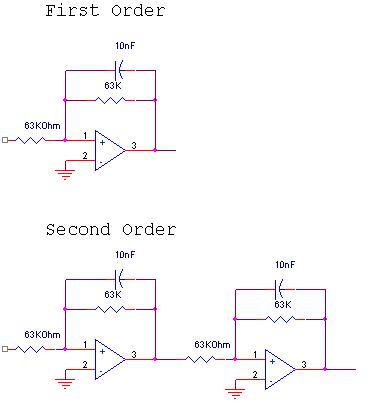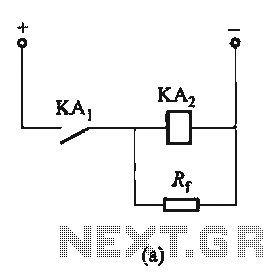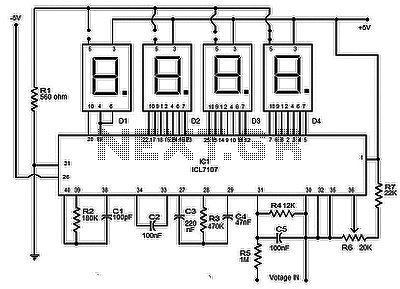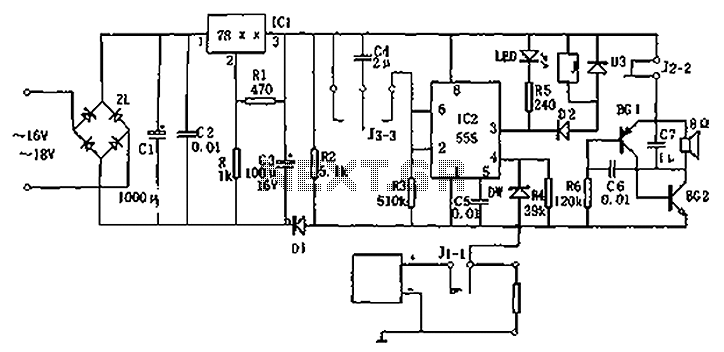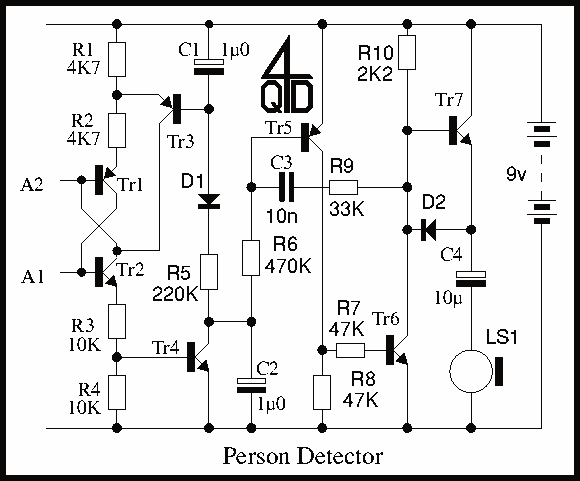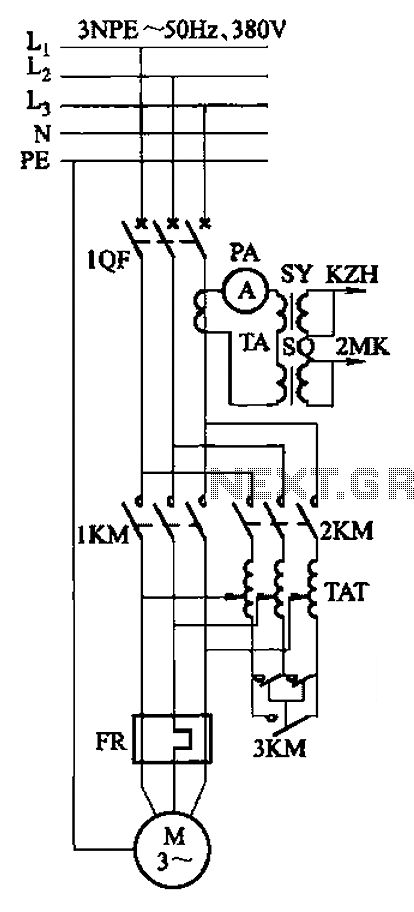
Display driver circuit digital voltmeter
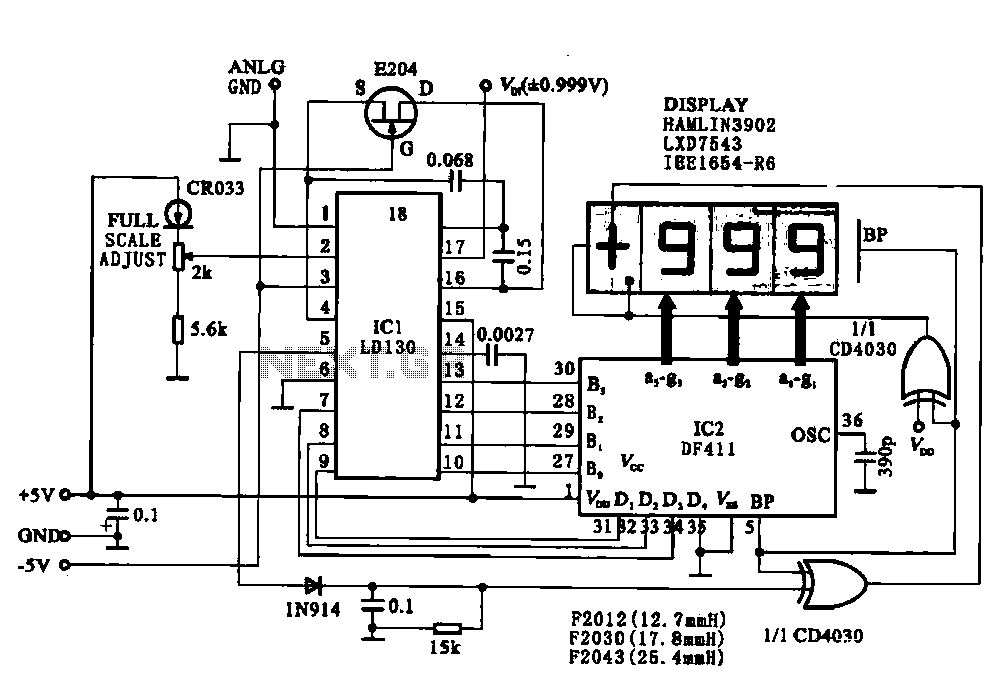
This circuit illustrates a display driving system for a digital voltmeter. The liquid crystal display (LCD) does not emit light by itself; it relies on external incident light for visibility. The integrated circuit (IC) LD130 serves as an input voltage detection circuit, converting an analog voltage value into four digital signals. These signals are then transmitted to the digital display driver IC JC2 DF411. The seven-segment driver IC2 processes the output signals into three groups, utilizing two gates from the CD4030 to facilitate the driving of the display.
This digital voltmeter circuit employs an LCD that requires external light for operation, making it suitable for environments where ambient light is available. The core of the circuit is the LD130 IC, which plays a crucial role in voltage detection. It takes an analog voltage input and translates it into a digital format, generating four distinct digital signals that represent the magnitude of the voltage being measured.
These digital signals are then fed into the JC2 DF411 driver, which is responsible for managing the display outputs. The JC2 DF411 is designed to handle multiple segments, ensuring that the voltmeter can accurately present the voltage readings in a user-friendly format. The seven-segment display is a common choice for digital voltmeters due to its simplicity and ease of reading.
To enhance the functionality of the display, the output from the JC2 DF411 is divided into three groups, allowing for a more organized and clear representation of the measured voltage. The CD4030 gates serve as a logical interface, enabling the control signals to effectively drive the LCD segments. This arrangement ensures that the display operates smoothly and accurately reflects the input voltage.
Overall, this circuit design integrates essential components to create a reliable digital voltmeter, capable of providing accurate voltage readings in a visually accessible format. The combination of the LD130 for voltage detection and the JC2 DF411 with CD4030 for display driving forms a cohesive system that meets the requirements of a digital measurement device.It shows a display driving circuit digital voltmeter. Liquid crystal display (LCD) itself does not light, it is the use of external incident light display digital devices. IC] LD130 is an input voltage detection circuit will detect an analog voltage value into four digital signals, sent by the foot digital display driver IC JC2 DF411 in. 7 segment driver IC2 output signal into three groups, by a digital sign in front of CD4030 two gates to drive.
This digital voltmeter circuit employs an LCD that requires external light for operation, making it suitable for environments where ambient light is available. The core of the circuit is the LD130 IC, which plays a crucial role in voltage detection. It takes an analog voltage input and translates it into a digital format, generating four distinct digital signals that represent the magnitude of the voltage being measured.
These digital signals are then fed into the JC2 DF411 driver, which is responsible for managing the display outputs. The JC2 DF411 is designed to handle multiple segments, ensuring that the voltmeter can accurately present the voltage readings in a user-friendly format. The seven-segment display is a common choice for digital voltmeters due to its simplicity and ease of reading.
To enhance the functionality of the display, the output from the JC2 DF411 is divided into three groups, allowing for a more organized and clear representation of the measured voltage. The CD4030 gates serve as a logical interface, enabling the control signals to effectively drive the LCD segments. This arrangement ensures that the display operates smoothly and accurately reflects the input voltage.
Overall, this circuit design integrates essential components to create a reliable digital voltmeter, capable of providing accurate voltage readings in a visually accessible format. The combination of the LD130 for voltage detection and the JC2 DF411 with CD4030 for display driving forms a cohesive system that meets the requirements of a digital measurement device.It shows a display driving circuit digital voltmeter. Liquid crystal display (LCD) itself does not light, it is the use of external incident light display digital devices. IC] LD130 is an input voltage detection circuit will detect an analog voltage value into four digital signals, sent by the foot digital display driver IC JC2 DF411 in. 7 segment driver IC2 output signal into three groups, by a digital sign in front of CD4030 two gates to drive.
